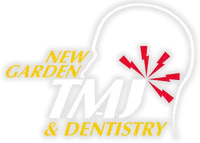The purpose of the spray and stretch technique is to quickly and painlessly alleviate acute pain and limited range of motion stemming from muscle trigger points.
What is a muscle trigger point?
The clinical definition of a central trigger point (TrP) as stated by Janet Travell, M.D. is as follows:
“A hyperirritable spot in skeletal muscle that is associated with a hypersensitive palpable nodule in a taut band. The spot is painful on compression and can give rise to characteristic referred pain, referred tenderness, motor dysfunction, and autonomic phenomena.” (Travell and Simons, 1999)
In addition, trigger points can also be classified according to location, tenderness and chronicity. Below is a list of the different types of TrPs and their definitions:
Central (Primary) Trigger Point: These always exist in the center of the muscle belly. They can be active or inactive.
Satellite (Secondary) Trigger point: These are created as a response to central trigger points nearby and lie within the referred pain pattern. If the central (primary) TrP is treated and removed the satellite TrPs will often resolve.
Attachment Trigger Point: Is a TrP at the musculotendinous area or area of attachment to the bone. It is thought that this may be a result of the presence of a central TrP since removal of the Central TrP reduces tenderness at the attachment TrP site.
Diffuse Trigger Points: These occur where multiple satellite TrPs exist secondary to multiple central TrPs.
Inactive (Latent) Trigger Point: This is a trigger point that is note eliciting spontaneous pain. These are only painful when palpated. They are often satellite TrPs.
Active Trigger Point: This is a TrP that is associated with spontaneous pain, is tender on palpation and refers a recognizable and repeatable pain pattern. It prevents full lengthening of the muscle, weakens the muscle, may cause autonomic phenomena, and if stimulated enough may cause a twitch response.
Why do I need to worry about muscle trigger points?
It is important to distinguish between the site of pain and the source of pain. Often with head and neck pain the site of the pain is not the source of the pain. This means that treating the site of the pain will have little success in alleviating symptoms of pain and dysfunction. One needs to locate the source of the pain and direct treatment at that source in order to be successful in decreasing pain and increasing function. To this end it is critical to get an accurate history of the pain condition from its onset to its present condition as well as a thorough examination. Before treatment can begin, it must be determined whether the patient is suffering from a true TMJ dysfunction (site and source of pain from the TMJ) or if the source of the pain is somewhere else but referring pain to the TMJ area. One of the most common causes of pain and dysfunction in the head and neck region which mimics a true TMJ dysfunction is a result of trigger points in the musculature of the head, neck, and upper back.
Spray and Stretch therapy can begin once it is determined that trigger points are at least partially responsible for the pain and dysfunction that the patient is experiencing. “In our experience, spray and stretch is the single most effective noninvasive method to inactivate acute TrPs.” (Travell & Simons, 1999)
How is the treatment done?
First the muscle or muscle groups are warmed with a moist heating pad to relax the patient and the muscles. After proper positioning of the patient, the spray and stretch treatment can begin. Spray and stretch therapy is accomplished by spraying a vapocoolant over the involved muscle in the direction of the referred pain pattern. This is immediately followed by a gentle stretch of the muscle. This can be repeated until full muscle length has been reached. The muscle or muscle group is re-warmed and the patient is guided through full range of motion. That completes one treatment for that muscle or muscle group.
